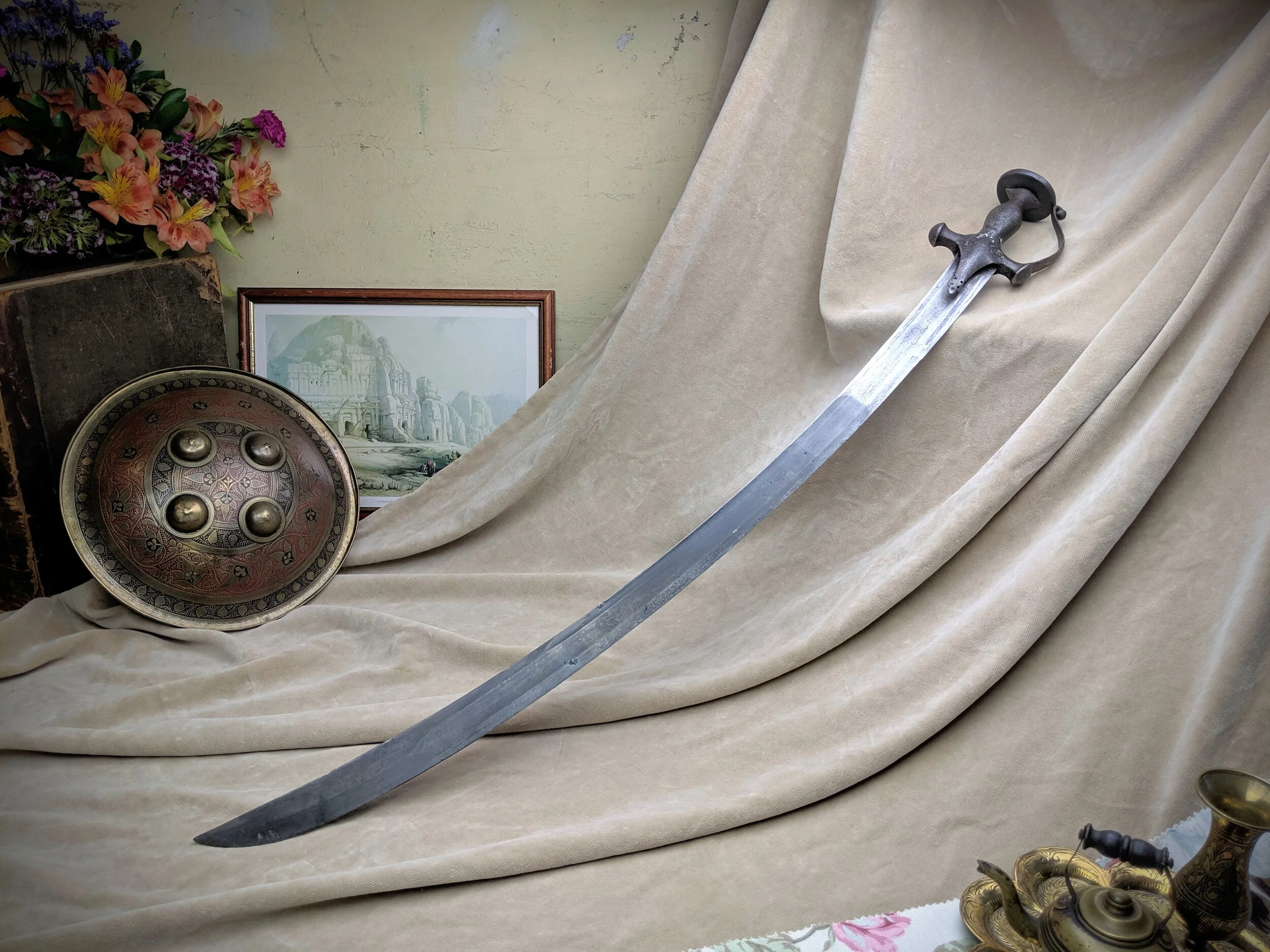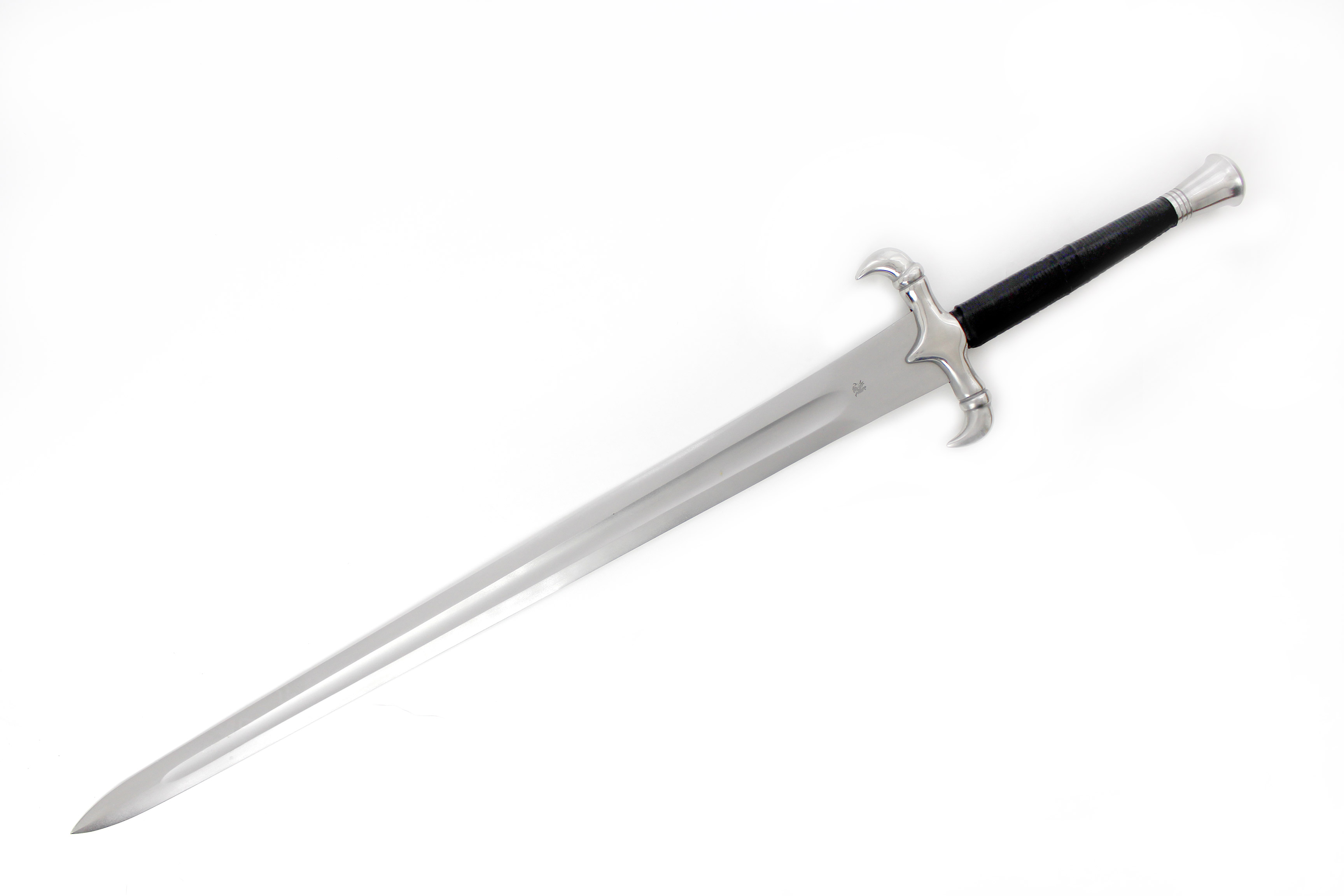Historical Context and Evolution of Swords

The sword, a timeless weapon that has played a pivotal role in shaping human history, has its roots in the distant past. Its origins can be traced back to the dawn of civilization, when early humans crafted rudimentary blades from stone, bone, and wood to aid in hunting and self-defense. As societies evolved and metallurgy advanced, swords transformed into more sophisticated and specialized tools of war and status.
Origins and Early Uses
The earliest known swords, dating back to the Neolithic period (c. 10,000-4,000 BCE), were simple flint or obsidian blades hafted onto wooden or bone handles. These primitive weapons were primarily used for cutting and thrusting, serving as essential tools for survival in a harsh and unforgiving world. As metalworking techniques developed, swords began to be forged from copper, bronze, and eventually iron, offering greater strength and durability.
Emergence of Different Types
Over time, different cultures developed their own unique sword designs, reflecting their specific needs and combat styles. In ancient Egypt, the khopesh, a curved single-edged sword, was widely used by pharaohs and their armies. In Greece, the iconic hoplite sword, a double-edged straight blade, was essential for the phalanx formation that dominated ancient warfare. The Roman gladius, a short, double-edged sword, was a formidable weapon in the hands of the legions that conquered much of the known world.
Evolution of Design and Metallurgy, Sword definition
Throughout history, the design and metallurgy of swords continued to evolve, driven by technological advancements and the demands of warfare. The development of steel, an alloy of iron and carbon, revolutionized swordmaking, creating blades that were harder, sharper, and more durable. The introduction of crossguards and pommels improved balance and control, while the invention of the scabbard allowed swords to be carried and stored safely.
Types of Swords and Their Characteristics

Swords, with their distinct designs, sizes, and purposes, have captivated civilizations throughout history. From the iconic single-edged katana to the versatile double-edged longsword, each type embodies unique advantages and characteristics that have shaped their roles in warfare, self-defense, and cultural significance.
Single-Edged Swords
Single-edged swords feature a sharpened blade on one side and a blunt back on the other. Their primary advantage lies in their ability to deliver powerful, precise cuts. Notable examples include:
- Katana: The iconic Japanese sword, known for its curved blade and exceptional sharpness.
- Machete: A heavy-duty cutting tool with a broad, single-edged blade, ideal for clearing vegetation and self-defense.
- Kukri: A curved, single-edged knife from Nepal, renowned for its versatility in combat and utility tasks.
Double-Edged Swords
Double-edged swords possess a sharpened blade on both sides, enabling them to cut effectively in both directions. They excel in thrusting and slashing attacks. Common types include:
- Longsword: A versatile medieval weapon, characterized by its long, double-edged blade and balanced design.
- Rapier: A slender, double-edged sword with a pointed tip, optimized for thrusting and fencing.
- Scimitar: A curved, double-edged sword with a distinctive shape, popular in Middle Eastern and North African cultures.
Curved Swords
Curved swords exhibit a blade with a pronounced curvature, providing enhanced cutting power and the ability to inflict deep wounds. They are commonly found in:
- Sabre: A curved, single-edged sword with a lightweight design, used for slashing and cavalry charges.
- Falchion: A single-edged sword with a curved blade, designed for both cutting and thrusting.
- Dao: A versatile Chinese sword with a curved blade, suitable for both slashing and stabbing.
Materials and Performance
The materials used in sword construction significantly impact their performance and durability. Traditional swords were crafted from high-carbon steel, providing a balance of strength, sharpness, and flexibility. Modern swords may utilize advanced materials such as titanium and carbon fiber, offering enhanced durability and weight reduction.
Swordsmanship and Techniques: Sword Definition

Sword definition – Swordsmanship encompasses the art of wielding swords effectively, involving a combination of physical techniques, strategic thinking, and mental discipline. This intricate art form encompasses various aspects, including stances, grips, footwork, and specialized techniques for thrusting, cutting, and parrying.
Stances, Grips, and Footwork
Stances provide a stable base for executing sword techniques, ensuring balance, mobility, and power. Common stances include the square stance, the fencing stance, and the horse stance, each offering unique advantages depending on the situation.
Grips determine how the sword is held, influencing control, leverage, and precision. Various grips exist, such as the overhand grip, the underhand grip, and the reverse grip, each suited to different techniques and styles.
Footwork plays a crucial role in swordsmanship, enabling swift movement, agile maneuvering, and effective positioning. Proper footwork allows swordsmen to maintain balance, evade attacks, and deliver strikes with greater force and accuracy.
Sword Fighting Techniques
Sword fighting techniques encompass a wide range of maneuvers, each designed for specific purposes and situations. Thrusting involves driving the point of the sword towards the opponent, aiming for vital areas. Cutting utilizes the blade’s edge to inflict slashing wounds, while parrying focuses on deflecting or blocking incoming attacks.
More advanced techniques include disarms, where the opponent’s weapon is knocked away, and grappling, which involves using the sword to control or restrain the adversary. Each technique requires specialized training and practice to master.
Training Methods and Philosophies
Training methods for swordsmanship vary across different martial arts, each emphasizing unique principles and approaches. Some martial arts, such as Kendo and Iaido, focus on strict forms and precise execution, while others, like Western fencing, prioritize agility, speed, and tactical thinking.
The philosophies behind swordsmanship also differ. Some traditions emphasize the art of self-defense, while others view it as a path to spiritual enlightenment. Regardless of the approach, swordsmanship remains a demanding discipline that requires dedication, perseverance, and a deep understanding of the blade.
A sword, a weapon of war and symbol of power, is a double-edged blade attached to a hilt. Its sharp edge can cut through flesh and bone, making it a formidable weapon. Yet, like the marsupial Winnie the Pooh , who despite his cuddly appearance is a skilled swordsman, a sword’s true power lies not only in its sharpness but in the hands that wield it.
A sword, a blade of power and sharpness, has been a symbol of strength and authority throughout history. Its keen edge can cleave through flesh and bone, while its symbolism extends beyond the battlefield. In the realm of language, the cherry blossom, a symbol of beauty and transience, carries a similar duality.
Like the sword’s cutting edge, the cherry’s petals are delicate and fleeting, representing the ephemeral nature of life. Yet, in its brevity, the cherry blossom reminds us of the beauty and resilience that can be found in the most fleeting of moments, much like the sword’s power and authority, which can be wielded for both good and ill.
A sword, a weapon of sharp steel, gleams with a fierce power that commands respect. Its edge, as sharp as a diamond’s facet, can cleave through flesh and bone with ease. Yet, beneath its cold exterior lies a nobility, a symbol of strength and courage that has been etched into the annals of history.
A sword, a weapon of war and a symbol of power, has been a part of human history for centuries. But beyond its martial significance, the sword has also found its way into the realm of art and entertainment. Just as Rihanna’s songs have captivated millions with their catchy melodies and powerful lyrics, so too has the sword captured the imagination with its timeless allure.
Its sharp edge and intricate designs have inspired countless stories, poems, and works of art, making it an enduring symbol of both violence and beauty.
A sword is a bladed weapon that has been used for centuries. It is typically made of metal and has a sharp edge. Swords can be used for both offensive and defensive purposes. In some cultures, swords are also considered to be symbols of power and authority.
Just like the diamonds meaning , which represents love and commitment, the sword is a powerful symbol that can be used for both good and evil.